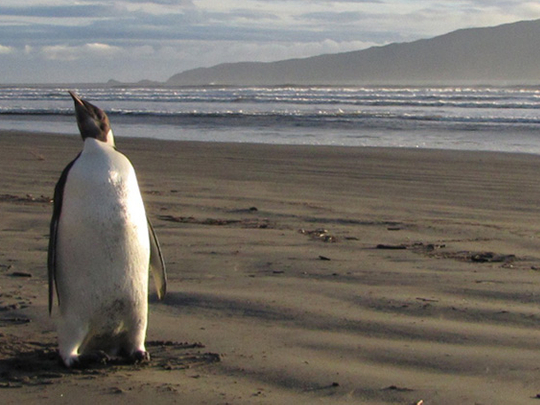
Oslo: Global warming will cut Antarctica’s 600,000-strong emperor penguin population by at least a fifth by 2100 as the sea ice on which the birds breed becomes less secure, a study said on Sunday.
The report urged governments to list the birds as endangered, even though populations in 45 known colonies were likely to rise slightly by 2050 before declining. Such a listing could impose restrictions on tourism and fishing companies.
The study is the first to project the long-term outlook for Antarctica’s largest penguins, which can grow 1.2 metres tall, seeking to fill a gap in understanding climate change and wildlife in one of the remotest parts of the planet.
Overall, numbers were set to fall by at least 19 per cent from current levels by 2100 as sea ice melts. And two-thirds of colonies of the birds, which have distinctive golden head patches, would decline by more than half, it said.
“It’s not happy news for the emperor penguin,” said Hal Caswell of the U.S. Woods Hole Oceanographic Institution, a co-author of the study in the journal Nature Climate Change.
Populations of most of 18 types of penguins are decreasing, according to a Red List run by conservation experts. Emperors are one of three species rated stable, with around 600,000 birds. Only king, adelie and chinstrap penguins are increasing.
The impact of climate change on penguins gets less attention than the effect on polar bears, which are often portrayed by scientists as victims of man-made warming and shrinking ice at the other end of the planet.
Despite rising global temperatures, sea ice around Antarctica has expanded in recent winters.
More sea ice around a continent the size of the United States and Mexico combined tends to mean more shrimp-like krill, on which penguins feed. Krill eat algae that grow under ice.
Frozen huddle
But emperor penguins, which breed on sea ice with the males huddling together to keep eggs warm in winter darkness and temperatures down to minus 50 degrees Celsius, are vulnerable to shifting sea ice.
“There is a goldilocks point for ice and emperor penguins,” said Phil Trathan, an expert at the British Antarctic Survey.
Too much ice means the females, which can travel 100 kms to the sea to catch fish, must waddle ever further. Too little ice means waves could break up colonies in spring.
Trathan said it was unclear if the ungainly birds could adapt by climbing onto land or higher ice. Four emperor penguin colonies had recently been found on ice shelves, above sea level where glaciers spill off the land.
Environmentalists urged governments to agree proposed marine reserves in the Ross Sea and off East Antarctica — so far opposed by Russia — to safeguard wildlife.
“Marine reserves are one of the best ways to protect penguins,” said Andrea Kavanagh, of the Pew Charitable Trusts.
Satellite images have made it easier to estimate emperor populations, especially a discovery in 2009 that droppings from their colonies leave stains visible from space.
“We have an excellent baseline for emperor penguins,” said Ron Naveen, a penguin expert at U.S.-based non-profit group Oceanites. He said other penguins, which breed on land, are far harder to spot by satellite amid rocks and shifting snows.












